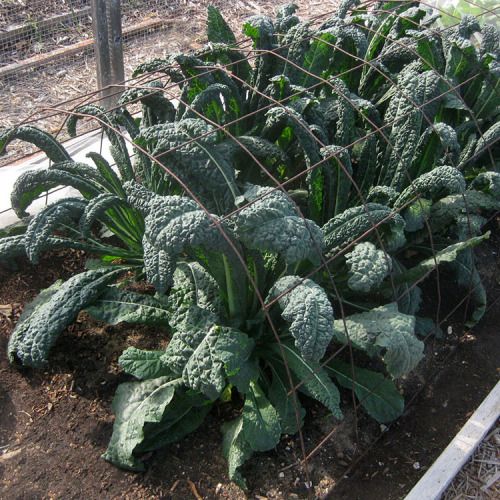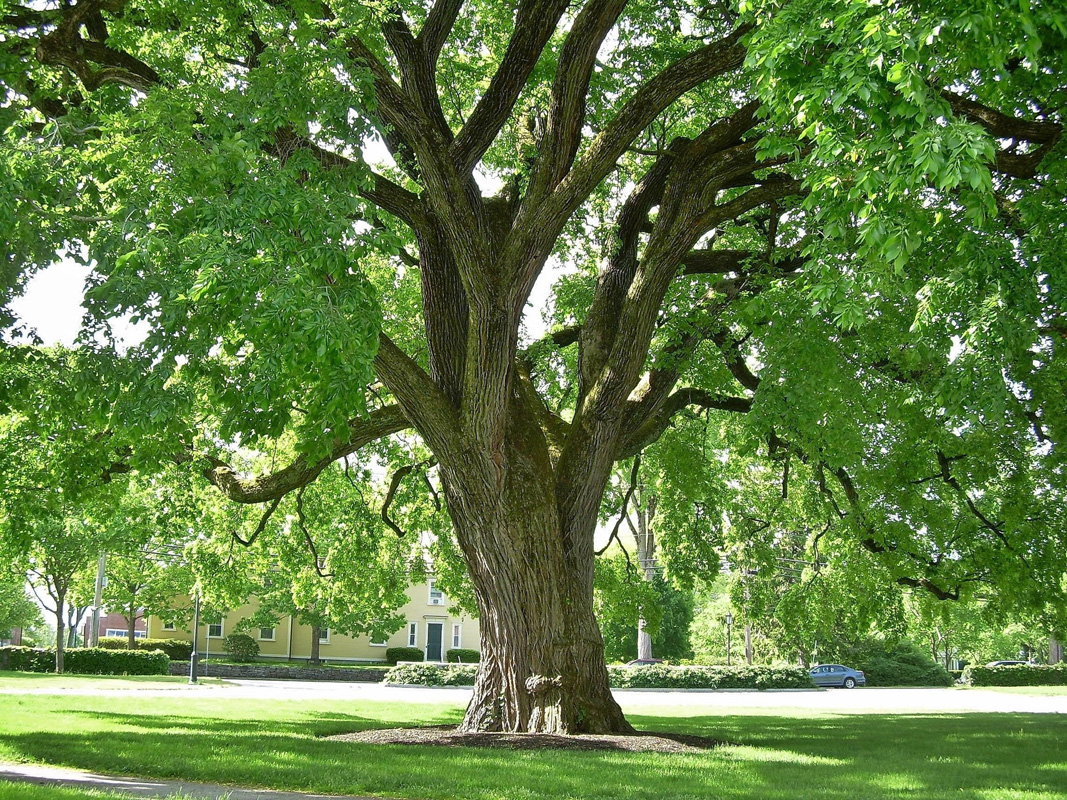Kale has been around for a long time, but this green leafy vegetable has been particularly in the past few years. Many people love kale because it’s versatile, nutritious, and tasty. This particular veggie is low in calories (perfect for people looking to stay fit) and packed with vitamins and minerals.
On top of growing butter lettuce and serrano peppers in your home garden (which we’ve covered in the past month), consider planting dinosaur kale to get more greens in your diet. This will allow you to whip up healthier dishes for you and your family.
What is Dinosaur Kale?

Dinosaur kale is a dark green leafy vegetable well-known in Italian cuisine. It goes by many names, including dino kale, lacinato kale, cavolo nero, and Tuscan kale. The leaves are so hearty that they retain an excellent firm texture even when well cooked. This makes the dinosaur kale a fantastic choice for adding to stews or braising.
What makes dinosaur kale different from other leafy vegetables is that it’s sweeter and less bitter than other types of kale. The relatively mild taste of this veggie can appeal to individuals who typically do not like kale or similar leafy green vegetable.
What’s more, dino kale is easy to prepare. You can eat both the rib and the leaf, either cooked or raw. Washing the dinosaur kale and blanching them will eliminate some bitter taste.
This type of kale was once inexpensive. Although dino kale is not expensive, the price has increased due to increased demand. Rather than buy dinosaur kale at the local grocery store or supermarket, you’ll be better off purchasing kale seeds and growing this veggie in your home garden.
Dinosaur Kale Plant History
Dinosaur Kale, known by many names such as lacinato, black kale, Tuscan kale, and cavolo nero, is a popular leafy green vegetable that has been around since 1800. It has been cultivated for centuries in Italy and the Mediterranean. It was first used as a leafy green and has since become a popular vegetable for its unique flavor, texture, and health benefits.
As a member of the Brassica family, Dinosaur Kale is related to broccoli and cabbage. It has blue-green leaves that are deeply ribbed, reminding people of a reptile’s skin, which gives it the nickname “dinosaur kale.” Since it is an heirloom cultivar, it is also used to create new varieties. Many new varieties have different flavors and textures, making them even more versatile when adding greens to your diet.
Dinosaur Kale has been used in Italian and Mediterranean cultures for centuries. It is often added to soups, salads, pasta, and stir-fries. It is also popular in the vegan and vegetarian world, providing an excellent plant-based iron and calcium source.
Different countries have different recipes that use Dinosaur Kale, such as Italian Minestrone soup, Greek spanakopita (a savory pastry dish filled with kale, spinach, and feta), or even an Indian dish called saag paneer (a creamy curry made with spiced greens and milk from a coconut palm tree). These dishes all testify to the versatility of Dinosaur Kale and its ability to adapt to many different cultures and cuisines.
In recent years, Dinosaur Kale has become a popular health food. This is due to its high nutrient content with many vitamins and minerals. Many people turn to Dinosaur Kale as an alternative to other greens or a way to add more greens to their diet.
Dinosaur Kale Plant Varieties And Types
You can choose from a few different varieties of Dinosaur Kale. The most popular type is ‘Lacinato,’ which has dark green, wavy leaves, and a sweet, nutty flavor. Other varieties include ‘Nero di Toscana,’ which has deep purple leaves, and ‘Vates,’ a smaller variety with a milder flavor.
You may also find other unusual or specialty varieties, such as ‘Rainbow Kale,’ a mix of different colored leaves, or the rarer ‘Mountain Kale,’ which is said to be even sweeter and more tender than other varieties. These rare varieties are harder to find but can be pretty rewarding if you can get your hands on them because of their unique flavor and texture.
When choosing a variety of Dinosaur Kale, it’s essential to consider your needs. If you’re looking for a milder flavor, the ‘Vates’ variety might be best for you. If you’re looking for a sweeter, nuttier taste, the ‘Lacinato’ variety might be a better choice. If you want to experiment with different flavors and textures, then you might want to try the more unusual varieties like ‘Rainbow Kale’ or ‘Mountain Kale.’
You can ask your local garden center or farmer’s market for advice on which variety would be best for you, as they may have tips and tricks that only come with experience. For example, they may know which type will grow better in your climate zone. Some varieties may be more heat tolerant or cold hardy than others. They may also recommend plants that would be great with your plant, such as the rainbow corn plant or the winter squash plant.
Dinosaur Kale Plant Companion Plants
If you’re looking for a great way to add greens to your diet, you might want to consider growing Dinosaur Kale yourself. But this plant can thrive better when planted alongside certain companion plants. This is called companion planting, a gardening practice that can help maximize the benefits of each plant.
Companion planting helps promote pest control and soil health and increases the amount of nutrients each plant receives. When growing Dinosaur Kale, you want to focus on plants that will help keep the soil moist and warm and provide extra nutrients for your kale plants.
Due to its strong flavor, it’s best to choose companion plants that won’t overpower the taste of Dinosaur Kale. Some great options include veggie plants such as beets, artichokes, cucumber, celery, onion, lettuce, potatoes, peas, and radishes. Add basil, garlic, chamomile, dill, rosemary, mint, thyme, and sage.
Some plants should not be planted alongside Dinosaur Kale, as they can compete for the same nutrients. These include cruciferous vegetables, such as broccoli and cauliflower, as well as tomatoes and peppers. Another plant to avoid is eggplant, as it’s sensitive to the cold and can stunt the growth of your Dinosaur Kale. If you want to grow other greens alongside Dinosaur Kale, it might be best to choose plants from a different family, such as lettuce and spinach.
Tips When Growing Dinosaur Kale
Dino kale is easy to grow. It’s not an incredibly picky plant in the garden. As a leafy green vegetable, it requires well-drained soils and good soil fertility to grow properly.
Dinosaur kale requires a steady supply of nitrogen to produce tender and sweet leaves, so don’t forget to amend your soil with compost before transplanting seedlings and sowing seeds.
Once the dino kale is set, thin them to approximately 12 to 18 inches apart, as this green leafy vegetable will grow into a fairly big plant. You may also mulch kale using a layer of organic material, such as straw. This will help reduce weeds and keep the soil moist and cool.
Although dinosaur kale can tolerate drought, it doesn’t necessarily mean you can water this leafy green vegetable sparingly. It still prefers steady moisture. The flavor and quality of dino kale leaves will suffer if this veggie becomes too dry. Water your crop as needed to maintain consistent soil moisture.
How to Take Care of Dinosaur Kale
Dinosaur kale is, unfortunately, vulnerable to the same insects that infest cabbage and broccoli, including nematodes, cabbage aphids, flea beetles, and cabbage loopers. This plant can also suffer from diseases like black leg, rot, and clubroot.
Growing dino kale during the year’s cooler months can help keep this leafy green veggie free of pests. Think about rotating cabbage family plants to various areas in your garden on a three- to four-year cycle to help minimize plant diseases.
When you’re ready to start growing Dinosaur Kale, you must keep a few things in mind. Depending on the type of Dinosaur Kale you have chosen and your climate, the care requirements may vary slightly. Here are a few gardening tips and hacks for this plant.
Soil and Watering Requirements
Dinosaur Kale prefers soil that is well-drained but still holds moisture. It should also be slightly acidic, with a pH of 6.0-6.8 for optimal growth. Make sure to water your plant regularly and give it enough space, as overcrowding can lead to poor growth. If you live in a warmer climate, watering more often may be necessary to ensure your plant stays healthy.
Sunlight and Temperature
Dinosaur Kale thrives in full sun but can tolerate some partial shade. During summer, temperatures should stay between 65-75 degrees Fahrenheit for optimal growth. In cooler climates, make sure to provide some frost protection if necessary. You can also cover your plants at night to keep them warmer.
Pruning and Harvesting
Because it is a leafy vegetable, Dinosaur Kale will need regular pruning and harvesting. You should remove any yellowing or damaged leaves to ensure your plant continues producing new leaves. You can also ‘pinch’ the tips of the plant to promote branching and encourage more production.
When it comes to harvesting, you can pick the leaves as soon as they reach the size you like. Younger leaves tend to be more tender and milder in flavor. If you wait too long, the leaves may become tough and bitter. But if you harvest too early, your plant may not reach its full potential. Try to find the right balance for your particular plant and climate.
Pests and Diseases
Dinosaur Kale is generally resistant to many pests and diseases, but there are a few that should be aware of. These include aphids, whiteflies, and cabbage loopers. If you notice these pests on your plant, use a natural insecticide or neem oil to eliminate them.
You should take action immediately if you notice any signs of disease, such as yellowing leaves, wilting, or stunted growth. Fungal diseases also threaten Dinosaur Kale and can be treated with a fungicide.
Dishes You Can Make with Dinosaur Kale
As mentioned earlier, dinosaur kale is a versatile vegetable. You can use it as an ingredient for salads or make delicious creamed kale. Apart from that, you can whip up the following dishes:
Lemony Kale Pasta
Making this hearty weeknight meal is easy. Simply toss dino kale with lemon, pecorino cheese, and any pasta you choose. Then, cook. Thanks to the pasta, this recipe will fill, but it feels light from the kale and the lemon.
Kale Chips

If you want a healthy alternative to the potato chips you’re buying at your local convenience store, try cooking kale chips right at home. Making this snack is incredibly simple. Bake dino kale in an oven for 20 to 25 minutes at 325 degrees Fahrenheit. Then, season the veggie to your liking. Some seasoning suggestions include sea salt, onion powder, and smoked paprika.
Crispy Kale Bars
Forget the energy bars you’re getting at vending machines. Check out this recipe to whip up crispy, toasted seed-enhanced power bars that you can bring to the office or the gym.
How to Store Kale
If you’ve got leftover dinosaur kale, you’ll want to store it properly. You can freeze kale properly by storing this vegetable in plastic in the fridge for five to seven days. You also have the option to wrap the stems in moist paper towels. Then, place the wrapped dino kale in the crisper.
Unlike other tender greens, dinosaur kale does not store better if you wash it first, and it may start to go limp. Put off this task until you are ready to use the veggie. Once cooked, refrigerate and consume it within a few days.
Dinosaur kale is no longer the icky green leafy vegetable that people (especially kids) only ate when their parents made them. Many are growing and cooking this trendy and nutritious veggie in their kitchens.
Health Benefits of Eating Dinosaur Kale
Due to its high nutrient content, Dinosaur Kale is an excellent choice for those looking to increase their intake of vitamins, including vitamins A, C, K, and B6, minerals, and antioxidants. It’s also an excellent source of fiber and protein, both essential for a healthy diet. In addition to these benefits, it contains compounds that can help reduce inflammation and improve digestion.
Dinosaur Kale is also an excellent choice for those looking to lower their cholesterol, as studies have found that it can help reduce levels of ‘bad’ cholesterol in the body. It is also considered beneficial for weight loss, as it is low in calories but provides good fiber, vitamins, and minerals.
Another great benefit of Dinosaur Kale is that it is easy to incorporate into recipes. It can be added to soups and stews, sautéed with olive oil and garlic, or eaten raw. Its unique flavor can be a great way to liven up salads or other dishes. Whether you eat it raw or cooked, adding Dinosaur Kale to your diet is a great way to get some extra greens into your meals.
Frequently Asked Questions
1) What are the health benefits of eating Dinosaur Kale?
Dinosaur Kale is an excellent source of vitamins, minerals, and antioxidants. It’s also a great source of fiber and protein, essential for a healthy diet. It can also help reduce ‘bad’ cholesterol levels and may benefit weight loss.
2) How does Dinosaur Kale differ from other types of kale?
Dinosaur Kale has deeply ribbed, blue-green leaves that give it the name “dinosaur kale.” The flavor is sweet and nutty, making it an excellent choice for salads. It is more heat tolerant than other varieties and can handle warmer climates better.
3) What are some easy recipes that use Dinosaur Kale?
Dinosaur Kale is very versatile and can be used in many recipes. Some popular dishes include Italian Minestrone soup, Greek spanakopita, Indian saag paneer, and stir-fries. Add it to soups, pasta, or salads to boost extra greens.
4) What are some common pests and diseases that affect Dinosaur Kale?
Common pests include aphids, whiteflies, and cabbage loopers. Fungal diseases can also attack Dinosaur Kale. Regularly inspect your plants and immediately take action if you see any signs of pests or diseases.
5) When is the best time to harvest Dinosaur Kale?
The best time to harvest Dinosaur Kale is when the leaves reach the size you like. Many people prefer to harvest younger leaves as they are more tender and milder in flavor. But you can also wait for a bit if you want bigger leaves.
Bottom Line
Dinosaur Kale is a unique and flavorful vegetable that has been around for centuries. It’s an excellent source of vitamins, minerals, and antioxidants and has many health benefits. It’s easy to incorporate into recipes, making it a great way to add more greens to your diet. It is essential to choose the right variety for your needs and provide the proper care to give it the best chance at success. With some know-how, you can enjoy the unique taste and benefits of Dinosaur Kale in your own kitchen!






